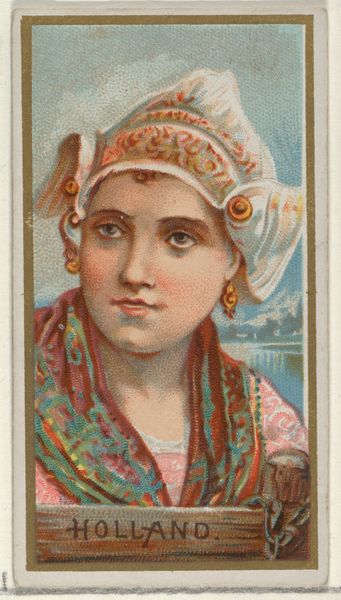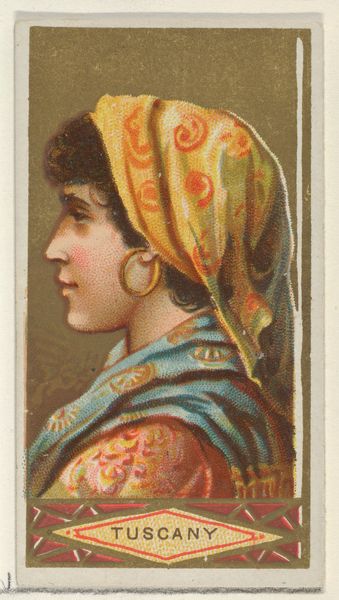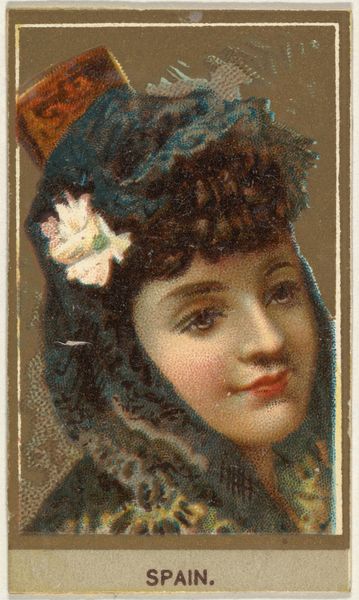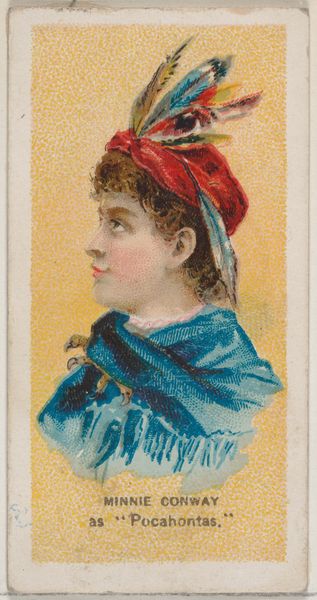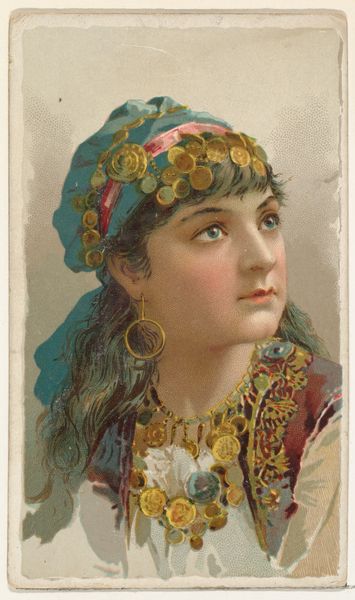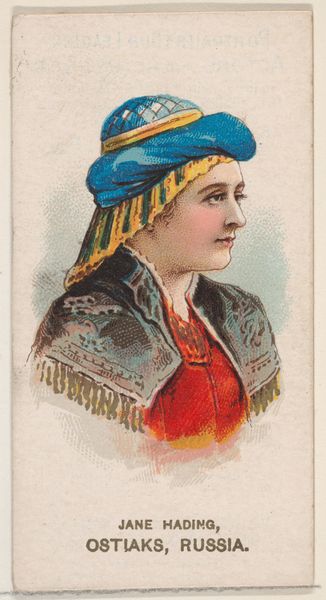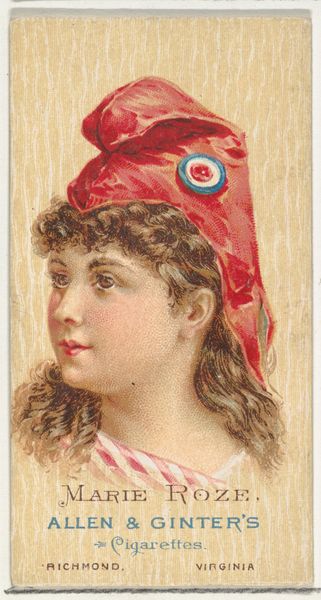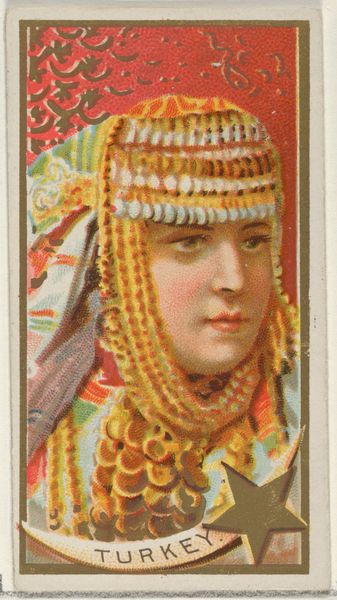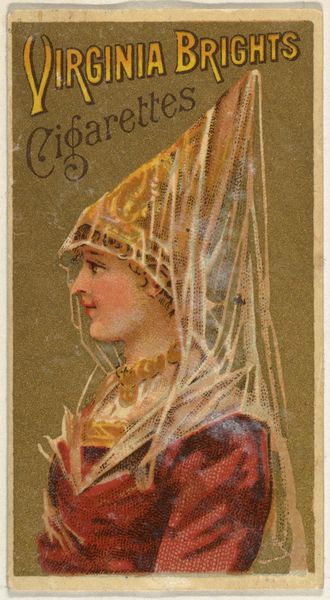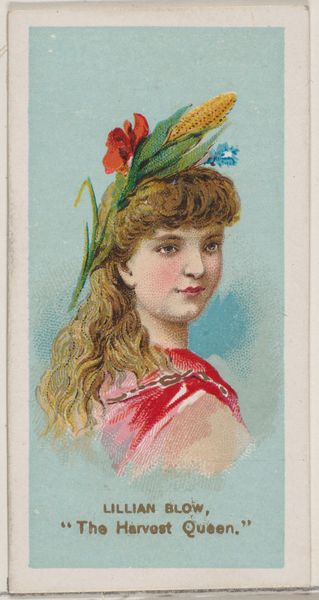
Syria, from the Types of All Nations series (N24) for Allen & Ginter Cigarettes 1889
0:00
0:00
drawing, print, watercolor
#
portrait
#
drawing
# print
#
oil painting
#
watercolor
#
coloured pencil
#
orientalism
#
men
#
watercolour illustration
Dimensions: Sheet: 2 3/4 x 1 1/2 in. (7 x 3.8 cm)
Copyright: Public Domain
Curator: What a striking image. This is a card from Allen & Ginter's "Types of All Nations" series, dating back to 1889, and it depicts a personification of Syria. Editor: The details are gorgeous, it almost glows. But it’s got an aura of 19th-century orientalist fantasy, don't you think? Curator: Absolutely. It's fascinating to consider that these cards, distributed with cigarettes, played a role in shaping popular perceptions of different cultures. Consider the printing process here: lithography allowing for mass production and wide distribution, contributing to a homogenization and idealization of the "exotic Other." Editor: Exactly! And the "types" classification itself reveals how these images were used to essentialize entire nations. What socio-political messages do these material objects convey and legitimize about the depicted Syrian subject? I wonder, how were Syrians being represented back home at the same historical moment, using, say, the newly established media of photography? Curator: Good point! These cards served to reinforce imperial power dynamics. They packaged and sold the world in easily consumable images. Editor: And that commodification extends beyond just representation. It implicates material conditions: labor, the use of resources...who profited from this image, and under what conditions? Was the model compensated? Curator: The very creation and distribution are implicated in global economies. The sourcing of paper, inks, the transportation networks used… the card is a node in a much larger system. Editor: The symbolism chosen and details included contribute to its complex context. Is the outfit she's wearing traditional? How much creative freedom did the artists employ in imagining Syrian dress? Curator: These "types" aren't faithful reflections. This card, as a commercial product, needed to conform to prevailing consumer tastes. It needed to "sell" the idea of Syria in a palatable, readily understandable form for its audience. Editor: This isn’t an unbiased window into Syrian culture. It tells us more about Western expectations and biases at the time. It seems that this collectible both reflected and manufactured fantasies around non-western people and lands. Curator: Yes, definitely. It's a beautiful object, a fascinating product of its time, but certainly loaded with historical complexities. Editor: A pocket-sized object lesson in the visual construction of identity and power!
Comments
No comments
Be the first to comment and join the conversation on the ultimate creative platform.
